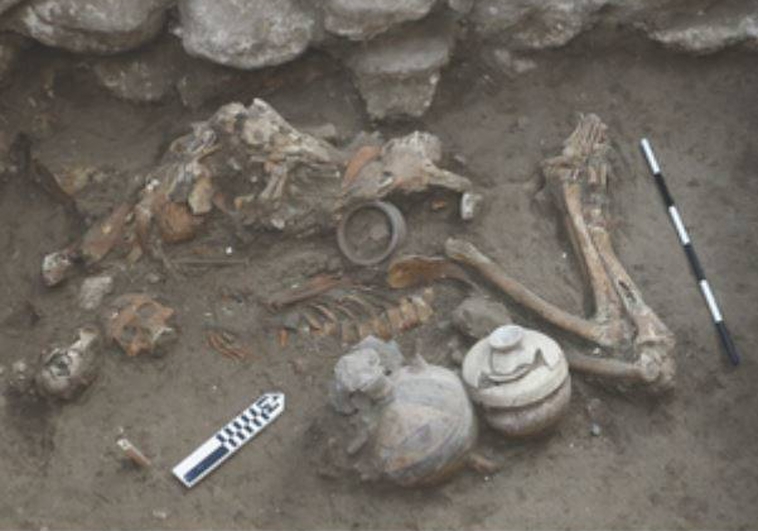Trephination was unsuccessful and the patient died during or soon after surgery
A late Bronze Age tomb of two brothers at an archaeological site in Megiddo (Israel) has revealed a surprise: the oldest cranial surgery of the Near East of which we have evidence to this day. Though it was excavated in 2016, in the domestic section of a mansion in the famed Biblical city, it is about time researchers from institutions in the United States and Israel published analyzes of the skeletons, revealing a rather tragic story of two brothers whose wealth was not enough to save them from an untimely death. The conclusions of the study are collected in the magazine ‘PLOS One’. Located 80 kilometers north of Jerusalem, the city of Megiddo existed around 1500 BC as a prosperous urban center consisting of multiple palaces, fortifications and temples. Many know it today by its Greek name, Armageddon, prophesied as the site of the final battle before the end times. There lived these two brothers, who were found in a palace reserved for the elite, among rich ceramics and other valuables, for which the authors believe they were people with a lot of power, or even royalty. Analyzes of bone size and development indicate that one lived to adolescence (at most twenty years), while the other, who underwent fatal surgery, died between the ages of 20 and 40. Thanks to the way the bones were placed, investigators know the child’s remains show signs of having been removed and reburied.
Although each of the brothers’ bodies show signs of an infectious disease (which the authors suggest could be tuberculosis or leprosy, although you can’t tell from the bones alone), the skull of the older of the two clearly shows signs of a procedure known as trepanation, which involves cutting or scraping the skull of a living patient to expose the brain. The reason is unclear: it may have been for purely superstitious intentions or to relieve pressure buildup in the brain. However, whatever the intention, the surgery was ultimately unsuccessful. The crossing of cut marks bordering the square opening in the front of his skull shows no signs of healing, suggesting that the man passed away shortly after her death. It is not the first time that the signs of these ancient millenary surgical operations of this type have been found: examples can be found in North Africa, up to the Neolithic Mediterranean and in central Europe. The methods are very different, from circular holes to square “hatches”, passing through elliptical cavities. However, there are only a few dozen other examples of drilling throughout the Middle East, and none of them date back several millennia before these skeletons. The finding helps complete a more global picture of how and why ancient cultures could have performed such a risky surgical act. Although they belonged to the upper classes of society and had access to this type of care, it is unlikely that the brothers enjoyed a comfortable life. Both skeletons showed signs of a prolonged iron deficiency in infancy, which may have affected their development. The older brother also had an extra line in the skull where the plates met, as well as an extra molar, indicative of a rare genetic condition called cleidocranial dysplasia. Additionally, the bones bore scarring consistent with an infectious disease, most likely tuberculosis or leprosy. Whether each individual succumbed to their own infection, or even contributed to the need for skull surgery, is hard to say. Though their lives were tragically cut short, it’s clear that whoever cared for them took drastic measures to keep them alive for as long as possible. “In ancient times, there was much more tolerance and much more care than people might think“says Kalisher. “We have evidence, literally come on Neanderthal times, that people cared for each other, even in difficult circumstances. I’m not saying it was all smiles and fun – there were divisions based on gender and class. But in the past, people were still people“.
